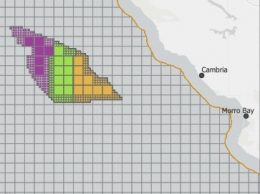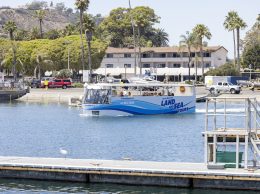Op/ed: Morro Bay leads the way on sustainable fisheries management

Henry Dubroff
Morro Bay continues to be one of the up-and-coming places on the Central Coast.
It has largely revitalized its tourism industry, in part by producing a series of successful seasonal festivals centered around seafood. But if my sources and research are correct, bigger rewards for the city will come in future years as a unique way of managing its fishing resources begins to pay off.
A series of journal articles and postings during the past six months chart the new course for the Morro Bay fishery, twice thought to have been abandoned. First was heavy overfishing by trawler fleets brought its fish population to the point of collapse. Then in 2006, The Nature Conservancy, the nation’s largest environmental group, effectively bought up all the fishing permits.
In recent years, the conservancy has begun leasing the permits back to fishermen who engage in sustainable business practices and who participate in an information sharing system that provides for what so far seems to be effective management.
The result is that fish stocks have begun to improve across a 3.8 million-acre rockfish conservation area. Since 2011, a new management system has allowed something like 20 participating boats to reduce unwanted “by-catch” and improve returns.
The program, called the Central Coast Groundfish Project, went into full swing in 2012, which means that the 2014 season will be crucial in measuring how well things will work in the long term.
The Central Coast office of U.S. Rep. Lois Capps, a Santa Barbara Democrat who has worked on a number of fishing related issues, helped organize talks that got the fishing projects off the ground.
The partial return of the Morro Bay fishery to private enterprise mirrors efforts up and down the Central Coast, where farm-to-table, and even what can be called sea-to-table practices are getting more popular. For example, UC Santa Barbara spinoff Salty Girl Seafood is using technology to facilitate a market for sustainably caught fish.
Getting closer to real-time management for fisheries in our coastal areas, including the Morro Bay success, is something that folks in Washington, Oregon and elsewhere along the Pacific Coast are likely to want to replicate.
Fishing is really part of the bedrock of the region’s coastal tourism industry.
It’s one of the great entrepreneurial activities around. So far, the new way charted by the partnership between the Nature Conservancy and a relatively small number of Central Coast fishermen seems to be working.
But it really does involve a tremendous amount of trust on both sides. Fishermen have to be willing to share a lot of closely-guarded secret information about where fish like to hang out and what time of day is best, and the environmentalists have to get used to the idea that shutting down fisheries completely has dire economic consequences for a small community like Morro Bay.
The complex solutions worked out in Morro Bay — there’s even an insurance “risk pool” that helps mitigate the impact of a poor fishing season for individuals — stand in contrast to a fight in Marin County that’s headed to the Supreme Court.
Earlier this year, Drake’s Bay Oyster Co. asked the U.S. Supreme Court to hear its appeal of a 2012 U.S. Department of the Interior decision to not renew its permit for oyster farming at the Point Reyes National Seashore. The company, which claims it has been singled out for unfair treatment by the government, lost before the 9th U.S. Circuit Court of Appeals.
Pointedly, this case has split many in the environmental community, with sustainable farming advocates arguing it’s right to keep the family-run oyster operation open. The company says it produces about one-third of all the oysters grown in California.
• Contact Editor Henry Dubroff at [email protected].












